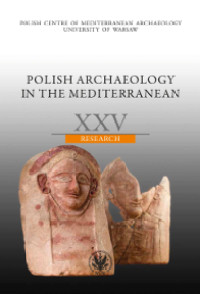Archaeological fieldwork in Berenike in 2014 and 2015: from Hellenistic rock-cut installations to abandoned temple ruins
Archaeological fieldwork in Berenike in 2014 and 2015: from Hellenistic rock-cut installations to abandoned temple ruins
Author(s): Steven E. Sidebotham, Iwona Zych, Martin Hense, Joanna K. Rądkowska, Marek WoźniakSubject(s): Archaeology, Architecture, Ethnohistory, Ancient World
Published by: Wydawnictwa Uniwersytetu Warszawskiego
Keywords: Berenike; Red Sea; port/harbor; Hellenistic fort; water storage; city gate; Roman; timber ship frame; graves; Great Temple; frankincense; Middle Kingdom stele; animal/cat cemetery; Eastern Desert;
Summary/Abstract: The report brings a comprehensive summary of archaeological fieldwork and survey carried out in Berenike on the Red Sea coast of Egypt and in the Eastern Desert hinterland over the course of two seasons in 2014 and 2015. The completed magnetic map of the site is discussed in some detail, assessing the potential for future excavations. The report covers the most important discoveries of the two seasons, which include fragments of Middle Kingdom Pharaonic stelae, possibly pushing back the foundation of the harbor, archaeological evidence of a rock-cut watercollection system forming part of the Hellenistic-age fortifications and two inscribed stone bases, one of which records a secretary of an aromatics warehouse at Berenike, discovered undisturbed in the courtyard of the Great Temple of Berenike (also called the Serapis Temple). A previously unknown religious complex was discovered on the western outskirts of the site thanks to work with Corona satellite imagery. In turn, analysis of the magnetic mapping of the city revealed an administrative complex in the northern part of the town; the later, 5th and 6th century layers were examined inside a chamber with niche forming part of this complex. Work also continued in the early Roman harbor, uncovering among others a complete timber ship frame, and a collection of garnets in subsidiary buildings in the late Roman temenos located in the entrance to the southwestern bay.
Journal: Polish Archaeology in the Mediterranean
- Issue Year: 2016
- Issue No: XXV
- Page Range: 315-348
- Page Count: 34
- Language: English

